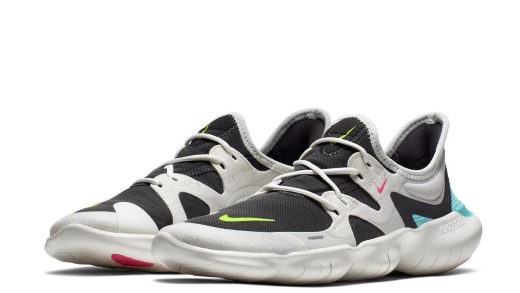The latest Nike Free comes with all the benefits of running barefoot
Find out the pros and cons of wearing zero to minimalist footwear when running

When the barefoot running craze died off several years ago, minimalist running footwear took a back seat. Until now. Nike has revealed its latest running shoe innovation – the distinct looking Nike Free, which is designed for a barefoot-like feel and a natural range of motion.
Increasingly, runners are expressing interest in footwear that delivers a more natural experience, so Nike has come full circle and redesigned the shoe to deliver upon the original brief from the early 2000s: a more natural running stride.
The all new Nike Free has a low-profile midsole that gets your foot engaged with the ground on each step.
Barefoot running has its place
Experts say, when done right, barefoot running can be a valuable tool to aid in overall running performance as a compliment to your overall training program.
But like any training program, you have to build toward your goal, and the Nike team realised that replicating barefoot motion can be too much for most runners. Enter Nike’s 5.0 and 3.0 naming system came, where 0 indicates bare and 10 denoting a built-up running shoe like an early 2000’s Nike Air Max model.
The Nike Free concept allows the foot to move more naturally than traditional footwear and helps protect runners from the elements like rough pavement and glass and pavement.
Bend and flex
The 2019 Nike Free Collection features two shoes: Nike Free Rn 5.0 and Nike Free Rn Flyknit 3.0. A key element of the new design is placing laser-siped flex grooves (a process of cutting thin slits across a rubber surface) at varying depths where the foot naturally wants to bend and stretch to release stiffness in the foam and enhance the feeling of movement to allow for a more natural foot motion. Both shoes’ midsole now features siping along the top of the midsole (in addition to the bottom) to increase dorsi and plantar flex movement.
To increase connection with the ground, the shoes’ offset is lower in both the Nike Free Rn 5.0 (2mm lower) and Nike Free Rn Flyknit 3.0 (4mm lower) compared to previous models. There is also increased flexibility over 2018 Nike Free models with the Nike Free Rn 5.0, offering 26 per cent more flexibility and the Nike Free Rn Flyknit 3.0 providing 37 per cent more flexibility.
Designers wanted the shoes to achieve a second skin fit and redesigned the uppers to meet the brief. The Nike Free Rn 5.0 offers a stretch mesh upper that utilises minimal construction and features a minimal lacing system to create a breathable, distraction-free fit. While the Nike Free Rn Flyknit 3.0 features Nike Flyknit yarns and a secondary lock-down overlay for added stability in the absence of laces.
Over a decade in the making
Nike Free has a rich history rooted in scientific research, and the latest shoe is 15 years in the making. It started in 2001 when Nike designer Tobie Hatfield took a trip to Stanford University to find out how the athletes had become so successful. He got a surprising answer: the
coach had a theory that running shoeless offered several benefits to his runners that they weren’t getting from running in their standard training shoes.
Nike began to dig into the science behind this theory. After more than a year of research, the results were surprising: runners who ran barefoot on grass had a more neutral foot strike; running barefoot engages more muscles in the foot and ankle; and running barefoot, over time, improves overall balance as well as foot strength and flexibility.
How to use it
If you normally wear supportive shoes then be alert to the fact that running in minimalist footwear can lead to injury, so it’s important to start slow.
Reset your foot by wearing a minimalist shoe like the Nike Free around the house and in daily life to see how your foot responds.
After increased use, Nike Free is great for low mileage training days. Elite athletes use Free for jogging gym work, and low mileage track workouts.
